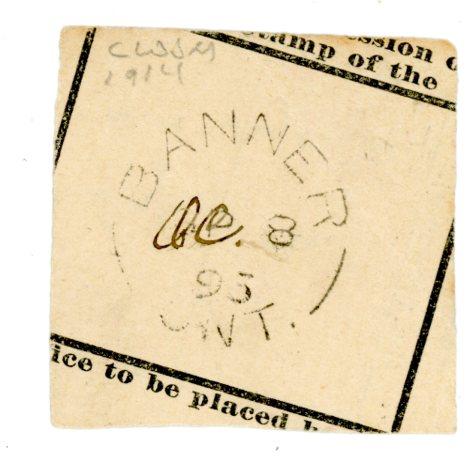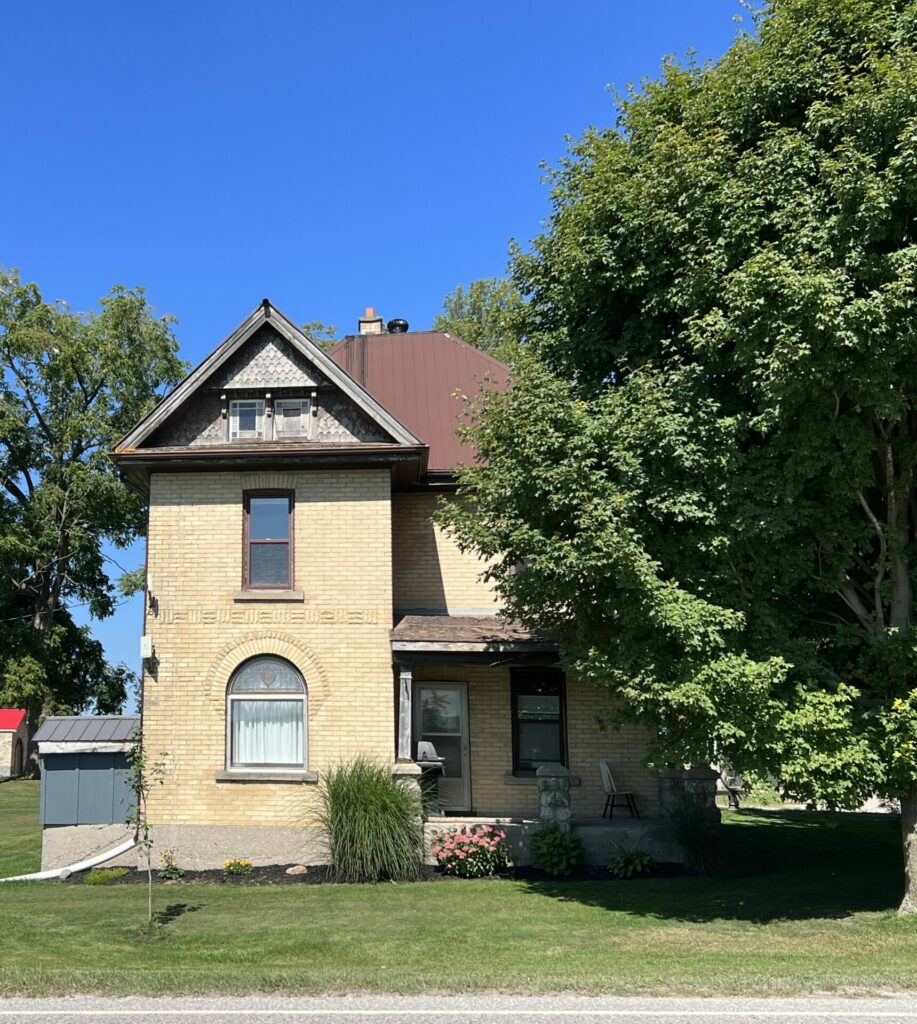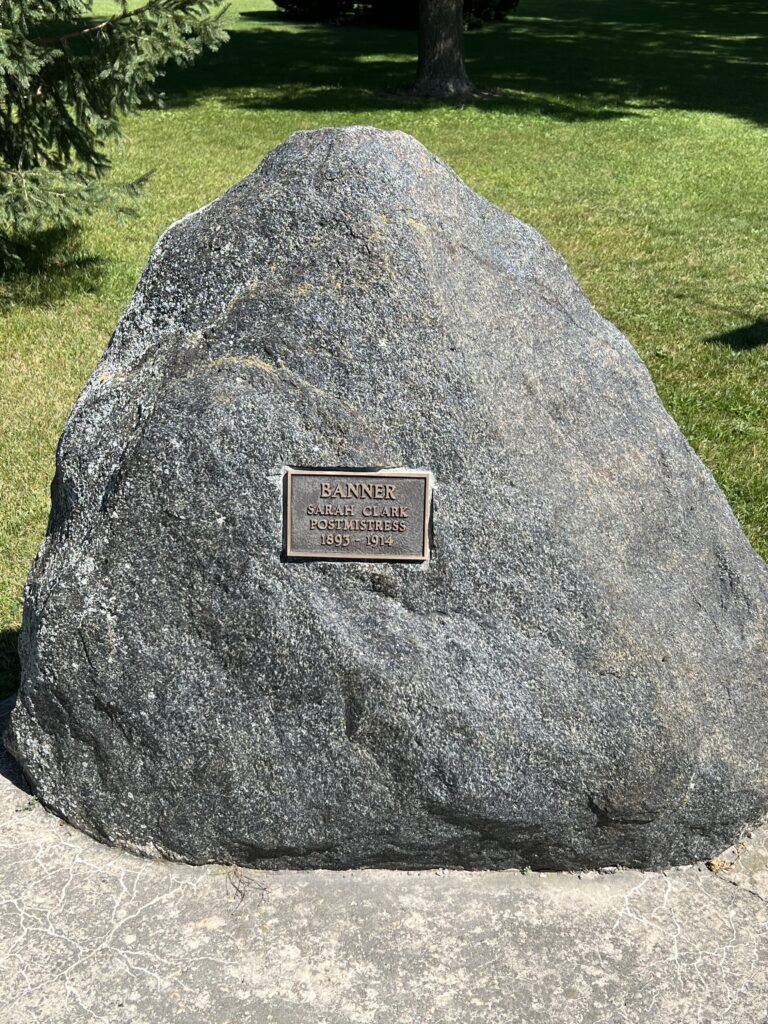Hello Everyone,
Please see this guest post from Gregg Redner, PhD, President of the Royal Philatelic Society of Canada:
‘As a lifelong stamp collector, I have always been interested in the postal history of my local area. My interest in Banner, comes from my wife’s father, Jack Hammond, whose family had a long standing farm, of several generations in the hamlet.
The former Township of North Oxford was the smallest of all of the rural municipalities of Oxford County. The first family to settle in the township came in 1784. By 1861, the census showed that the population had reached 1,771 people. While the soil in the township was uniformly excellent, the heavily forested terrain made life very difficult.
With the coming of the Great Western Railroad, the area became less isolated, and the possibility now existed to sell surplus crops and goods to communities outside the immediate area, bringing some small increase in posterity. The first train to travel through North Oxford Township arrived on December 15, 1853, travelling at the remarkable speed of six miles per hour.
The small hamlet of Banner, located in the extreme southwest corner of Oxford County, between Dorchester and Ingersoll, had been originally called Spearman’s Corners. By the time of the arrival of the Great Western, Banner was the site of a wood yard – which supplied passing locomotives – and a small station and shipping centre located at Patton’s Siding on Putnam Road. This building, more of a shanty than a station, contained a device that allowed the operator to signal the stations in Ingersoll and Dorchester that a passing train needed to stop at Patton’s Siding to pick up freight or passengers. The last shipment of wheat that left from Patton’s siding was shipped by Vincent Holdenhurst and John Spearman in 1904. The Great Western Railway amalgamated with the Grand Trunk in 1882 and second track was laid through the area.
Little has changed today in the Banner today. Located at the intersection of Catherine Street and Banner Road, the hamlet still contains its beautiful little church (built in 1856) a schoolhouse, which was constructed in 1900, now a private residence, the Foresters Hall and the house, which at one time served as the local post office.
The first attempt at establishing a post office in Banner, then known as Spearman’s Corners, took place from May 1, 1870, until June 30, 1871. The post office was operated out of a private home and was known as the Wesley Office. The Postmaster General’s report of 1871, states that the gross revenue of the office was $28.10, while the postmaster was paid $10.75 for that period. While there is no formal documentation of who the Postmaster was at this time, oral history suggests that it was James Cain.
During the period following the closing of the first post office in Banner, there was no delivery for residents in Banner. Mail had to be retrieved by going to the post offices in either Thamesford or Ingersoll. In 1883 a Canadian Pacific Station was built in Putnam and this office became the central distribution point for mail in the area, which was sent out to the smaller offices two to three times per week.
In 1893 James Clendinning filed a petition with the government to bring daily mail delivery to the small hamlet of Spearman’s Corners. That same year, the community was officially renamed Banner. On March 1, 1893, the new Banner Post Office began operation out of the house of Mrs. Sarah Clark, who served as Postmistress (See Fig. 1).
To make daily mail delivery a possibility in Banner, a catch post – a high post with two large hooks on which outgoing mail could be hung – was placed along the Grand Trunk Railway tracks which crossed the Clendinning farm. At roughly 2:30 p.m. the mail train came from London, scooping up the outgoing bags from the hooks and drawing them into the mail car. The incoming mail would be tossed from the mail car to James Clendinning, who carried it to the Post Office, where it was sorted by Mrs. Clark. This would all be accomplished by the time school was dismissed for the day, and as the children left to go home, when they would pick up the mail from office and deliver it to their parents. Fig. 2 shows an example of an 1895 postmark from the Banner Post Office.
The post office served the people of the community faithfully until June 1, 1914, when the coming of Rural Mail Delivery made the post office redundant. Sarah Clark served the community of Banner as Postmistress for the entirety of the office’s existence. A plaque stands at the intersection of Banner Road and Catherine Street, to commemorate her service in this capacity (See Fig. 3)’



